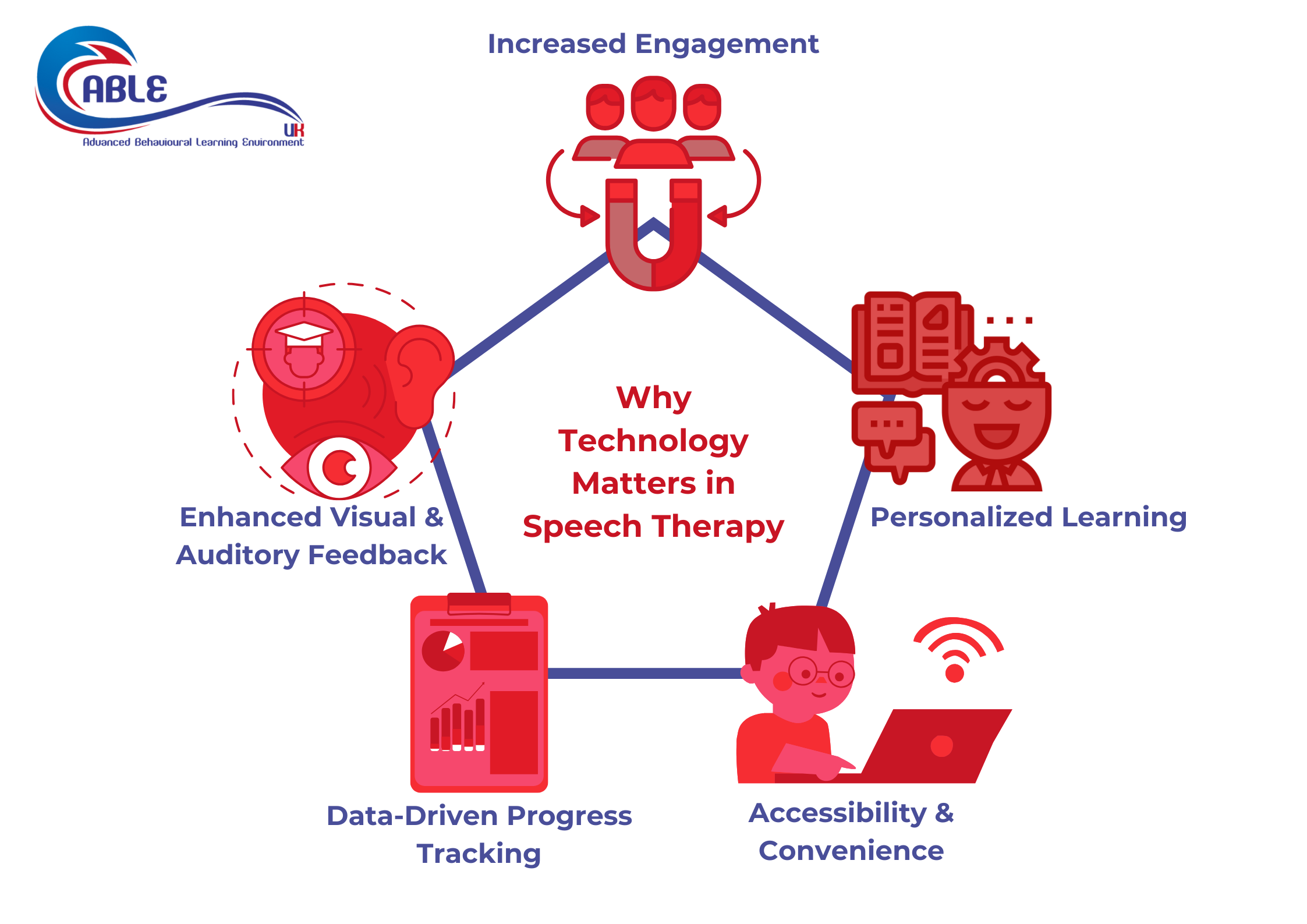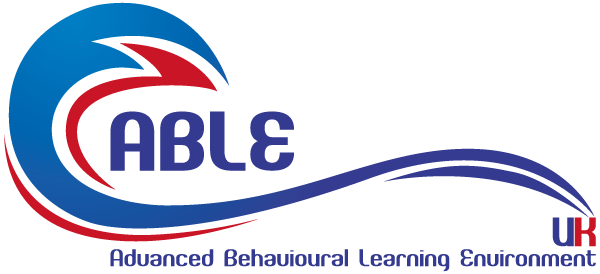Technology in Speech Therapy: How Digital Tools Support Communication Skills

In today’s digitally driven world, technology isn’t just about entertainment or social media; it’s revolutionizing various fields, including healthcare. One area where technology is making a significant impact is speech therapy. Let’s dive into how digital tools are transforming the way we support communication skills.
Traditionally, speech therapy involved face-to-face sessions with therapists, using physical tools like flashcards, mirrors, and workbooks. While these methods remain valuable, the integration of technology has opened up a world of possibilities. Think about it: our daily lives are interconnected with digital devices, from smartphones to tablets. Why not harness this familiarity to make therapy more engaging and effective?
Why Technology Matters in Speech Therapy

Why Technology Matters in Speech Therapy – ABLE UK
- Increased Engagement:
→ Children and adults alike are often more engaged with interactive digital content. Apps and games can make therapy sessions fun and motivating, leading to better participation and results.
→ Imagine using a tablet game that requires a child to pronounce words correctly to advance through levels. This gamified approach turns practice into an enjoyable activity.
- Personalized Learning:
→ Digital tools offer the ability to tailor therapy to individual needs. Software can track progress, identify areas needing improvement, and adjust exercises accordingly.
→ For example, a therapist can use an app to create customized exercises that target specific speech sounds or language concepts that a client struggles with.
- Accessibility and Convenience:
→ Teletherapy, conducted via video conferencing, allows individuals to access speech therapy from the comfort of their homes. This is particularly beneficial for those with mobility issues, busy schedules, or limited access to specialized services.
→ For many families, this means they can receive world-class speech therapy without needing to travel long distances, saving time and reducing stress.
- Data-Driven Progress Tracking:
→ Digital tools provide detailed data on a client’s progress, allowing therapists to monitor improvements and make informed decisions about treatment plans.
→ This data can include metrics like accuracy rates, response times, and frequency of use, providing a comprehensive overview of a client’s development.
- Enhanced Visual and Auditory Feedback:
→ Technology can provide immediate visual and auditory feedback, helping individuals understand and correct their speech errors.
→ For example, apps can display visual representations of sound waves, allowing clients to see how their pronunciation compares to the correct sound.
Examples of Digital Tools in Speech Therapy
- Speech Therapy Apps:
→ These apps offer a wide range of exercises and activities designed to improve articulation, language, fluency, and voice. Many apps use interactive games, videos, and animations to keep users engaged.
→ Examples of use: Apps that help children with Apraxia of speech, by visually showing the correct mouth movements, and then recording the child’s attempt and providing feedback.
- Teletherapy Platforms:
→ Video conferencing platforms enable therapists to conduct sessions remotely, providing real-time interaction and personalized instruction.
→ This is very useful, as it allows for a wider range of clients to be serviced.
- Augmentative and Alternative Communication (AAC) Devices:
→ These devices help individuals with severe speech impairments communicate using symbols, pictures, or text-to-speech technology.
→ These can range from dedicated devices, to tablet apps.
- Interactive Whiteboards and Software:
→ These tools allow therapists to create dynamic and engaging activities, incorporating multimedia elements like videos, audio recordings, and interactive games.
→ This helps with keeping the client’s attention, and maximizes the use of the therapy time.
- Virtual Reality (VR) and Augmented Reality (AR):
→ These technologies are emerging tools that can create immersive and realistic environments for speech therapy. VR can simulate real-life scenarios, helping individuals practice communication skills in a safe and controlled setting. AR can overlay digital information onto the real world, providing visual cues and feedback.
→ For example, practicing ordering food in a virtual restaurant, or practicing social skills in a virtual park.
How Technology is Integrated into Speech Therapy
It is understood the importance of staying at the forefront of technological advancements. Digital tools are integrated into speech therapy programs to provide clients with the best possible care. Therapists are trained to use a variety of digital resources, ensuring that each client receives personalized and effective therapy.
- Comprehensive Assessments:
→ Digital assessment tools are used to evaluate a client’s communication skills and identify their specific needs.
- Customized Treatment Plans:
→ Based on the assessment results, individualized treatment plans are developed that incorporate appropriate digital tools and strategies.
- Ongoing Support:
→ Ongoing support and guidance are provided to clients and their families, ensuring that they can effectively use digital tools at home.
The Future of Technology in Speech Therapy
As technology continues to evolve, we can expect even more innovative tools and applications to emerge in the field of speech therapy. Artificial intelligence (AI), machine learning, and advanced data analytics will play a significant role in personalizing therapy and improving outcomes.
Conclusion
Technology is transforming speech therapy, making it more engaging, accessible, and effective. By integrating digital tools into programs, clients are helped to unlock their full potential and live more fulfilling lives.
We encourage you to explore the possibilities of technology in speech therapy and discover how it can make a positive impact on your life or the life of someone you care about.

3 comments
🛡 + 0.75154152 BTC.GET - https://graph.org/GET-BITCOIN-TRANSFER-02-23-2?hs=34e8de36f8deb6278eb2e35489113c2b& 🛡
March 25, 2025 @ 4:47 pmi20pmo
🔗 + 1.92789 BTC.GET - https://graph.org/Message--05654-03-25?hs=34e8de36f8deb6278eb2e35489113c2b& 🔗
April 2, 2025 @ 9:47 amm7po04
Natalie3985
April 21, 2025 @ 1:21 pmVery good https://is.gd/tpjNyL